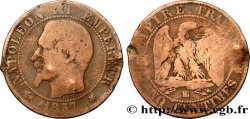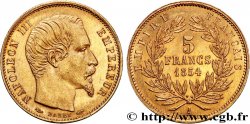E-auction 615-597367 - SECOND EMPIRE Médaille, Major Martin, École de la Martinière
You must signin and be an approved bidder to bid, LOGIN TO BID. Accounts are subject to approval and the approval process takes place within 48 hours. Do not wait until the day a sale closes to register. Clicking on « bid » constitutes acceptance of the terms of use of cgb.fr private e-auctions.
Bids must be placed in whole Euro amounts only. The sale will start closing at the time stated on the item description; any bids received at the site after the closing time will not be executed. Transmission times may vary and bids could be rejected if you wait until the last second. For further information ckeck the E-auctions F.A.Q.
NO BUYER'S FEE.
NO BUYER'S FEE.
Type : Médaille, Major Martin, École de la Martinière
Date: 1860
Metal : copper
Diameter : 50,5 mm
Orientation dies : 12 h.
Engraver DANTZELL Joseph (1805-1877)
Weight : 61,89 g.
Edge : lisse + main CUIVRE
Puncheon : main indicatrice (1845-1860) et CUIVRE
Coments on the condition:
Patine marron hétérogène. Présence de plusieurs coups et rayures, notamment au revers
Obverse
Obverse legend : CLAUDE MARTIN FONDATEUR / LABORE ET CONSTANTINI.
Obverse description : Tête de profil tourné vers la droite, signé : DANTZELL FILS.
Reverse
Reverse legend : ÉCOLE DES SCIENCES ET ARTS INDUSTRIELS DE LYON / LA MARTINIERE // VOLLOT. L / 2.E D.ON / 1.R PRIX / GEO.IE P.QUE / 1860.
Reverse description : Légende en deux lignes circulaires et en 6 lignes horizontales entre des branches de chêne.
Commentary
Médaille décernée à L. Vollot.
Claude Martin, né à Lyon (France) le 4 janvier 1735 et mort à Lucknow (Inde) le 13 septembre 1800 est un soldat français de la Compagnie française des Indes orientales, puis de la Compagnie anglaise des Indes orientales (CAIO). Il amasse une grande fortune qu'il consacra à la création, après sa mort, de trois écoles à Calcutta, Lucknow et Lyon, toutes trois appelées “a Martinière”.
La Martinière fut un bref instant dans le palais Saint-Pierre (musée de peinture de Lyon) puis en 1832-1833 transférée dans l'ancien cloître des Augustins vers les Terreaux. Aujourd'hui il existe aussi La Martinière-Duchère, La Martinière-Monplaisir.
Le Major Martin légua aussi des sommes pour construire la Martinière-Lucknow (Inde) et un autre établissement à Calcutta. Mais les deux institutions "historiques" furent celles de Lyon (Augustins) et Lucknow avec la même devise : Labore et Constantia. .
Claude Martin, né à Lyon (France) le 4 janvier 1735 et mort à Lucknow (Inde) le 13 septembre 1800 est un soldat français de la Compagnie française des Indes orientales, puis de la Compagnie anglaise des Indes orientales (CAIO). Il amasse une grande fortune qu'il consacra à la création, après sa mort, de trois écoles à Calcutta, Lucknow et Lyon, toutes trois appelées “a Martinière”.
La Martinière fut un bref instant dans le palais Saint-Pierre (musée de peinture de Lyon) puis en 1832-1833 transférée dans l'ancien cloître des Augustins vers les Terreaux. Aujourd'hui il existe aussi La Martinière-Duchère, La Martinière-Monplaisir.
Le Major Martin légua aussi des sommes pour construire la Martinière-Lucknow (Inde) et un autre établissement à Calcutta. Mais les deux institutions "historiques" furent celles de Lyon (Augustins) et Lucknow avec la même devise : Labore et Constantia. .








 Report a mistake
Report a mistake Print the page
Print the page Share my selection
Share my selection Ask a question
Ask a question Consign / sell
Consign / sell
 Full data
Full data










